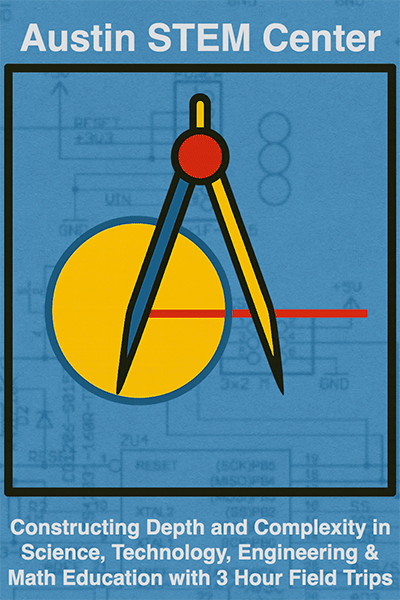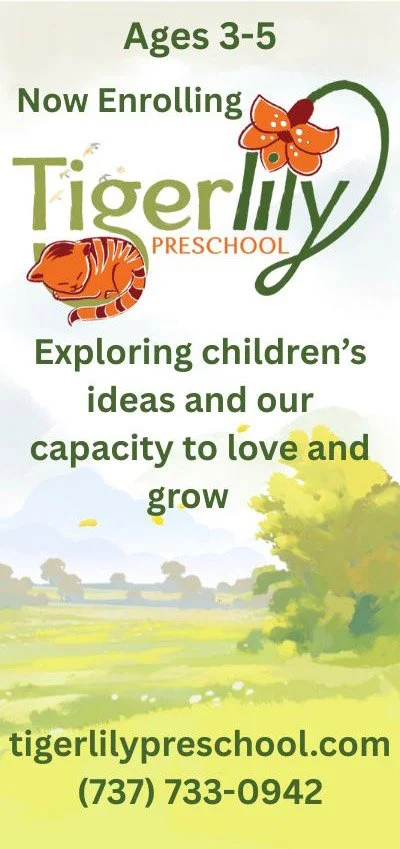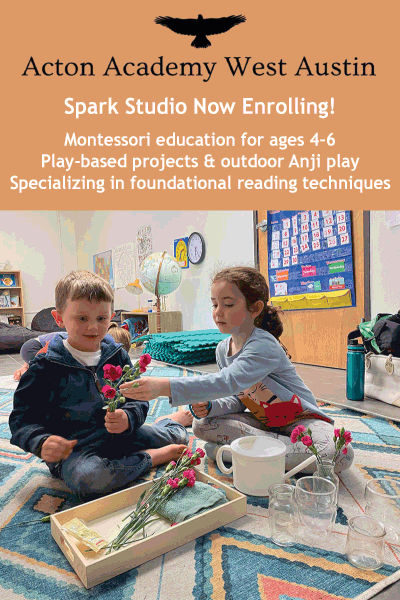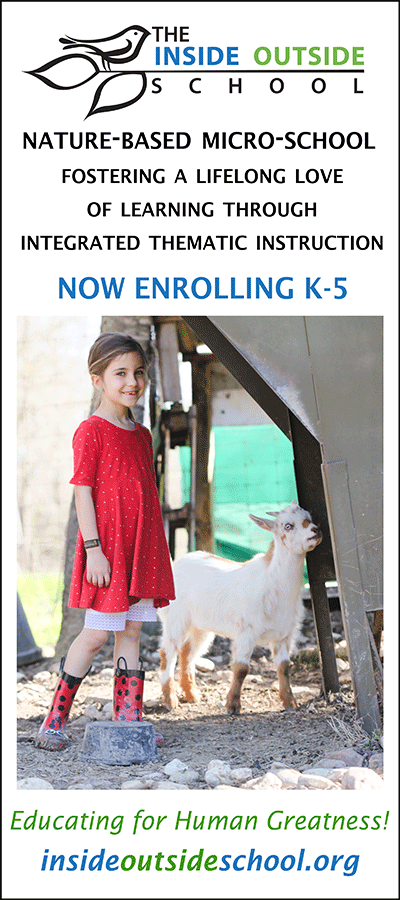Should all children be provided gifted education?
/
Guest contributor Srinivas Jallepalli is the founder of Sankalpa Academy, a growth mindset school that seeks to offer gifted education to all children. Sankalpa Academy is located a few blocks from the Thinkery in the Mueller area and will be launching in Fall 2018.
Srinivas received a B.Tech. degree from the Indian Institute of Technology, Madras (now Chennai) in 1991 and M.S. and Ph.D. degrees from the University of Texas at Austin in 1993 and 1996 respectively, all in Electrical Engineering. After two summers at AT&T Bell Laboratories, he joined Motorola in 1996 and spent the last two decades researching advanced semiconductor process challenges affecting low power and high performance circuits. He also had the honor of serving on the modeling and simulation sub-committee of the International Electron Devices Meeting in 2006 and 2007 and finally as its chair in 2008. He is currently a Technical Director at NXP Semiconductors and holds four U.S. patents and has contributed to over fifty papers in IEEE conferences and refereed journals.
Srinivas has a keen interest in understanding child development research and the challenges that are preventing us from bringing this research to our schools. This passion has led him to conduct an extensive meta-analysis of published research and to also author a broad-ranging survey of parents and teachers.
“It has been a disastrous half. His work has been far from satisfactory. His prepared stuff has been badly learnt, and several of his test pieces have been torn over; one of such pieces of prepared work scored 2 marks out of a possible 50. His other work has been equally bad, and several times he has been in trouble, because he will not listen, but will insist on doing his work in his own way. I believe he has ideas about becoming a Scientist; on his present showing this is quite ridiculous, if he can't learn simple Biological facts he would have no chance of doing the work of a Specialist, and it would be sheer waste of time, both on his part, and of those who have to teach him.” Mr. Gaddum, an Eton College science teacher, made these comments on the 1949 report card of a 16-year-old John Gurdon. A short 13 years after the summer at Eton, Gurdon showed that the DNA from specialized cells of frogs, like skin and intestinal cells, could be used to generate new tadpoles. The pioneering work of Gurdon has opened new doors as scientists now attempt to create replacement tissues for treating diseases like Parkinson's and diabetes. Sir John Gurdon was the 2012 winner of the Nobel Prize for Medicine.
While it is tempting to dismiss the comments of Sir Gurdon's teacher as the product of a culture of a bygone era, this episode does offer a valuable lesson. We see time and again that profound learning and growth happen only when one has agency and is invested in his/her work and is inspired by the challenge in front of them. This is the underlying premise of Dr. Maria Montessori’s work and the Waldorf movement and of most child-centered schools. Yet, how many of us would go so far as to offer gifted education and higher expectations as the solution to struggling students in failing schools? Henry (Hank) Levin is just such a pioneer.
Hank Levin is an education economist who first came to fame in 1966 when he challenged the findings in the Coleman Report and the statistical analyses on which they were based. The Coleman Report, requested by the U.S. Office of Education, sought to identify the determinants of academic achievement. Levin’s passion for improving the educational outcomes of disadvantaged children led to decades of research in the areas of education reform, equity, and efficiency and eventually to the launch of the Accelerated Schools Project for at-risk children in 1986. The idea was that treating at-risk children as gifted and talented students was the best way to engage them and to significantly accelerate their learning. His program built upon students’ strengths and creativity. By immersing them in relevant and meaningful real-world projects, he built their capacity for insight and thus their agency. Contrast this with the prevalent remedial approaches in 1986. In fact, even today, many schools offer drills, worksheets, and other “chew and pour” approaches to disadvantaged children and thus drive them farther away from the love of learning. An independent evaluation of the Accelerated Schools found that they produced strong academic results on test scores (as weak an indicator as they are!) at a relatively low cost (Bloom 2001). In 1992, the New York Times named Levin one of “nine national leaders in education innovation,” and American Educational Research Association presented him with the Distinguished Contributions to Research in Education Award in 2017.
Through a very different path, Professor Joseph Renzulli, educational psychologist and distinguished professor in the Neag School of Education at the University of Connecticut, arrived at very similar conclusions as Levin. While many look at IQ and processing speed to determine giftedness, Renzulli proposed a three-ring model that looked at ability, creativity, and task commitment. Based on his model for giftedness and his understanding of child development, he advocated that schools should provide all students with the opportunities needed to develop higher-order thinking skills. He felt that all children can and should pursue more rigorous content. His Schoolwide Enrichment Model or SEM (Renzulli 1985), which supports child-led exploration through enrichment clusters, has been gaining significant popularity in recent years. Laurel Mountain Elementary school in RRISD is one example of a local public school that has adopted the SEM approach.
As one might expect, similar improvements have been taking place in schools outside the United States as well. Levin’s Accelerated Schools have also been established in Hong Kong, for example. It is noteworthy that in Ghana's capital city of Accra, about 80 percent of children are now enrolled in preschool by age 3. More interestingly, the preschools in Accra are in the process of retooling their programs to enhance their children’s learning and development. They are moving away from rote memorization to a curriculum that values open-ended questions, reasoning, and reflection. Very similar fundamental changes are also taking place in the elementary classrooms across China, only on a much grander scale. For example, Adream Foundation has built over 2,700 “Dream Centers” across China to foster curiosity and creativity in their young children. To promote risk taking, the foundation has explicitly prohibited judgment and criticism at these centers.
The large body of research on human abilities (Gardner 1983; Sternberg 1984; Bloom 1985; Renzulli 1986; Reis 1995; Levin 2013) bolsters the claim that the strategies employed in gifted and talented education are essential for general education as well. Given the decades of research and investment, and a lengthy federal report on improving education for the gifted and talented (National Excellence: A Case for Developing America’s Talent; U. S. Department of Education, 1993), is there consensus on what gifted education entails? Please stay tuned as I explore this further in my next blog post (the second of a three-part series) here.
Srinivas Jallepalli
References
Bloom, B. S. (Ed.). (1985). Developing talent in young people. New York, NY: Ballantine Books.
Bloom, H.S., Ham, S., Melton, L., & O’Brient, J. (2001). Evaluating the accelerated schools approach: A look at early implementation and impacts on student achievement in eight elementary schools. New York: Manpower Demonstration Research Corporation.
Gardner, H. (1983). Frames of mind: The theory of multiple intelligences. New York, NY: Basic Books.
Levin, H. (2013) “Acceleration for All,” with Pilar Soler, In J. Hattie & E. Anderman, Eds., International Guide to Student Achievement (New York: Routledge, 2013), 209-211.
Reis, S. M., Gentry, M. L., & Park, S. (1995). Extending the pedagogy of gifted education to all students (Research Monograph 95118). Storrs: University of Connecticut, The National Research Center on the Gifted and Talented.
Renzulli, J. S. (1986). The three-ring conception of giftedness: A developmental model for creative productivity. In R. J. Sternberg & J. E. Davidson (Eds.), Conceptions of giftedness (pp. 53-92). New York, NY: Cambridge University Press.
Renzulli, J. S. (1993). Schools are places for talent development: Applying “gifted education” know-how to total school improvement. Unpublished manuscript. The National Research Center on the Gifted and Talented: The University of Connecticut, Storrs.
Renzulli, J. S. (1994). Schools for talent development: A comprehensive plan for total school improvement. Mansfield Center, CT: Creative Learning Press.
Renzulli, J. S., & Reis, S. M. (1985). The schoolwide enrichment model: A comprehensive plan for educational excellence. Mansfield Center, CT: Creative Learning Press.
Sternberg, R. J. (1984). Toward a triarchic theory of human intelligence. Behavioral and Brain Sciences, 7, 269-287.
U.S. Department of Education, Office of Educational Research and Improvement. (1993). National excellence: A case for developing America’s talent. Washington, DC: U.S. Government Printing Office.
















